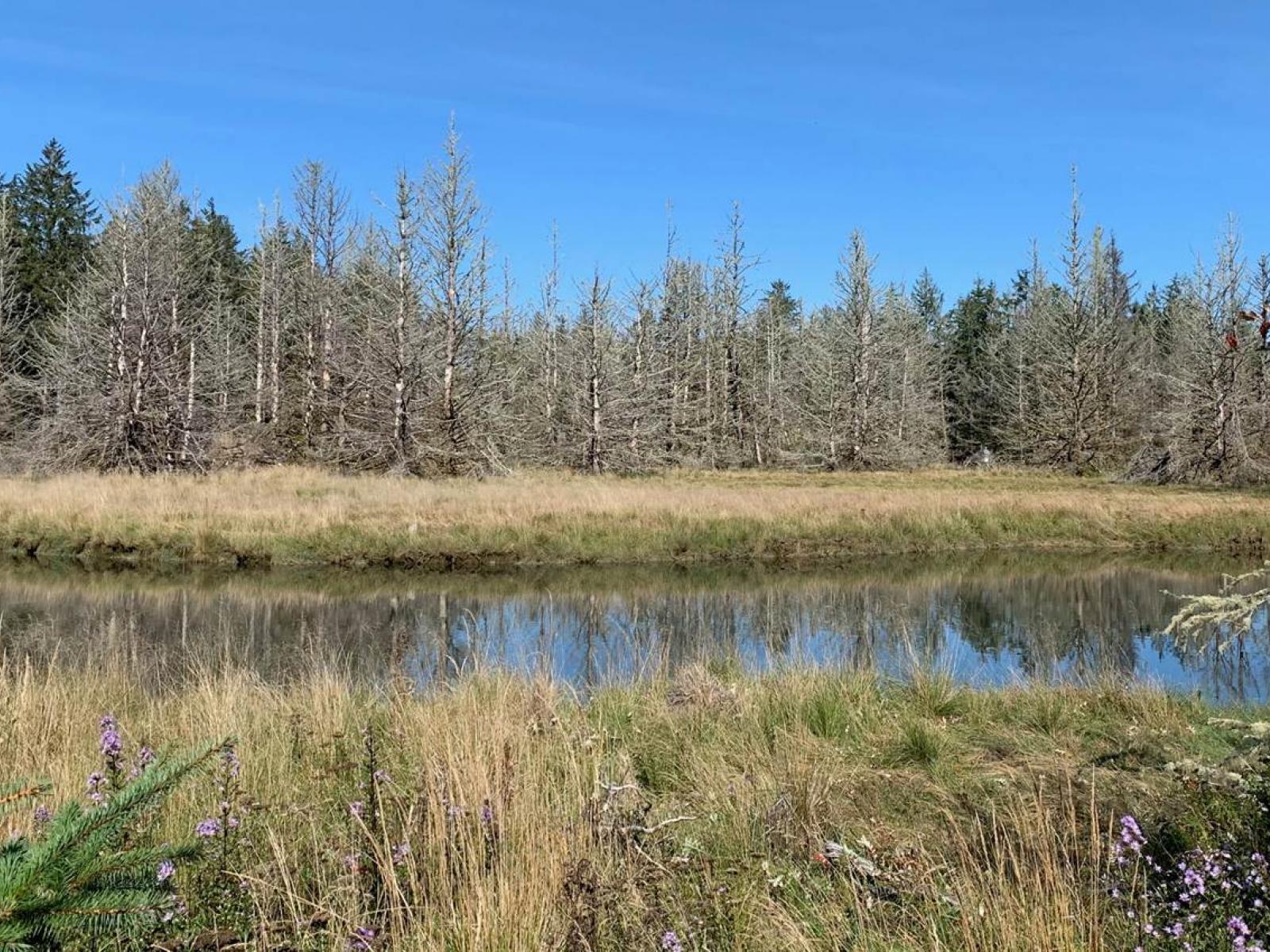Seawater Drives Tree Mortality Through Carbon Starvation
Measurements of forest after an anomalous seawater exposure event reveals carbon starvation as dominant process underlying deaths

Research field site
(Photo courtesy of Nick Ward | Pacific Northwest National Laboratory)
The Science
Increasing mortality rates of coastal woody plants is a conundrum, and researchers expect the rates to worsen as sea levels continue to rise. This study concentrated on a forested floodplain that was exposed to seawater after a culvert was breached to allow salmon habitat restoration. The anomalous exposure caused rapid and widespread death of the forest. Hydraulic failure—the plant’s inability to move water from roots to leaves—was the immediate threat to the trees. However, rather than kill them outright, the small degree of hydraulic failure promoted carbon starvation through reductions in photosynthesis, eventually leading to mortality.
The Impact
Coastal plant mortality is rising globally, leading to negative impacts on ecosystem services that are of value to society. Knowledge of the mechanisms leading to this mortality is in its infancy, which impairs researchers’ ability to make predictions about future coastal ecosystem loss. For the first time, scientists measured the key metrics of hydraulic failure and carbon starvation in trees that were dying from seawater exposure. The event was an anomaly, but it was indicative of what will likely happen as sea levels continue to rise. Results from the study will pave the way for improved understanding of coastal tree mortality, thus creating a pathway for model development that targets the key processes leading to coastal forest loss.
Summary
Coastal plant mortality is rising in concert with the sea level, yet the mechanisms of mortality in these systems are untested. This lack of research leads to a large knowledge gap that subsequently precludes mechanistic prediction of future coastal ecosystem loss. In this study, scientists examined the key processes expected to kill plants—hydraulic failure and carbon starvation—in trees that experienced novel exposure to seawater. A culvert was breached below a forested floodplain to increase salmon spawning habitat, resulting in seawater exposure that was unprecedented in the life of this forest. The ability to transport water within the plants was reduced within the first year of the event, leading to carbon starvation via photosynthetic loss. In short, carbon starvation was ultimately the dominant driver of mortality. These results pave the way for improved knowledge and model development for prediction of future coastal forest loss.
Funding
This work was funded by the Department of Energy’s COMPASS-FME project. This research is also part of the PREMIS Initiative at Pacific Northwest National Laboratory (PNNL). It was conducted under the Laboratory Directed Research and Development Program at PNNL. Wenzhi Wang was also supported by the National Natural Science Foundation of China (41977396). Laura Fernandez de Una was supported by European Union’s Horizon 2020 Marie Skłodowska-Curie Individual Fellowship No. 844028. Charlotte Grossiord was supported by the Swiss National Science Foundation (PZ00P3_174068).
Published: April 19, 2022
Wang W., P. Zhang, H .Zhang, C. Grossiord, S.C. Pennington, M.J. Norwood, W. Li, A.L. Pivovaroff , L. Fernández-de-Uña, R .Leff , S.B. Yabusaki, S. Waichler, V.L. Bailey, N.D. Ward, N.G. McDowell. 2022. “Severe declines in hydraulic capacity and associated carbon starvation drive mortality in seawater exposed Sitka-spruce (Picea sitchensis) trees.” Environmental Research Communications. 4 035005. https://doi.org/10.1088/2515-7620/ac5f7d